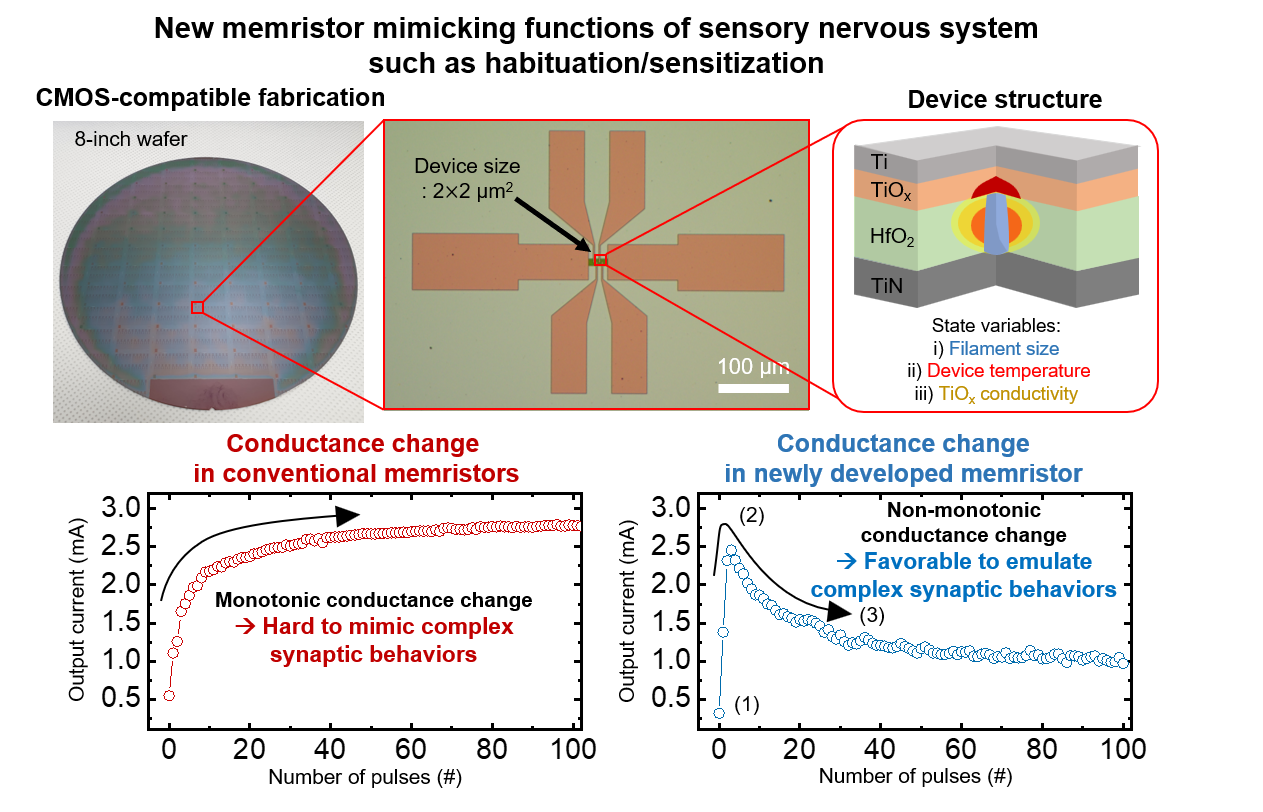
With the joint advancement of artificial intelligence and robotics technologies, enabling robots to perceive and respond to their environments as efficiently as humans has become a critical challenge. Recently, a Korean research team has attracted attention by newly implementing an artificial sensory nervous system that mimics biological sensory nerves without any complex software or circuitry. This technology minimizes energy consumption while intelligently reacting to external stimuli, promising applications in ultra‑miniature robots, prosthetic hands, and robotics for medical or extreme environments.
A joint research team led by Shinhyun Choi, KAIST Endowed Chair Professor, and Jongwon Lee, Professor in the Department of Semiconductor Convergence at Chungnam National University, together with See‑On Park of the integrated MS-PhD program in the KAIST School of Electrical Engineering, has developed a next‑generation, neuromorphic‑semiconductor‑based artificial sensory nervous system. They experimentally demonstrated a novel robotic system that responds efficiently to external stimuli.
Animals, including humans, ignore safe or familiar stimuli but respond selectively and sensitively to important ones, thus preventing energy waste while focusing on crucial signals for swift reaction to environmental changes. For example, one soon tunes out the hum of an air conditioner or the feeling of clothes on the skin, yet quickly focuses on hearing one’s name called or sensing a sharp object touching the skin. This is regulated by the sensory nervous system’s functions of “habituation” and “sensitization,” and many have sought to apply these biological features to robots for more efficient, human‑like environmental responses.
However, implementing complex features such as habituation and sensitization in robots has required separate software or intricate circuitry, hindering miniaturization and energy efficiency. In particular, efforts using memristors, neuromorphic semiconductor elements whose resistance depends on the history of current flow, have been limited by conventional memristors’ simple conductance changes, which failed to replicate the sensory system’s complexity.
To overcome these limitations, the team engineered a new memristor in which opposing conductance‑changing layers coexist within a single device. This structure enables the realistic emulation of habituation and sensitization, as seen in biological sensory nerves.

This device gradually reduces its response upon repeated stimuli and, when a danger signal is detected, becomes sensitized again, faithfully reproducing the complex synaptic response patterns of real nervous systems.
Using these memristors, the researchers built a memristor‑based artificial sensory nervous system for touch and pain detection, and attached it to a robotic hand to test its efficiency. When safe tactile stimuli were repeatedly applied, the robotic hand initially sensitive to the novel touch began to ignore it, demonstrating habituation. Later, when an electric shock accompanied the touch (a danger signal), the system recognized it as such and regained sensitivity, confirming the sensitization function.

These experiments prove that robots can respond to stimuli as efficiently as humans without complex software or processors, validating the feasibility of energy‑efficient, neuro‑inspired robots.
See‑On Park, first author of the study, stated, “By emulating the human sensory nervous system with next‑generation semiconductors, we’ve opened the door to a new class of robots that respond more intelligently and with greater energy efficiency to their environments. We expect applications in ultra‑miniature robots, military robots, and medical prostheses, where the convergence of advanced semiconductors and robotics is critical.”
This research was published online on July 1, 2025, in the international journal Nature Communications.
Paper title: Experimental demonstration of third‑order memristor‑based artificial sensory nervous system for neuro‑inspired robotics
DOI: https://doi.org/10.1038/s41467-025-60818-x
This research was supported by the National Research Foundation of Korea’s Next‑Generation Intelligent Semiconductor Technology Development Project, Mid‑Career Research Program, PIM AI Semiconductor Core Technology Development Project, Outstanding Young Researcher Program, and the Nano Comprehensive Technology Institute’s Nanomedical Devices Project.